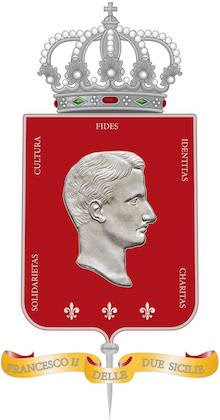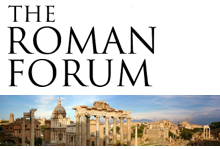 |
Bartholomew Augustine Santamaria (1915-98)
Courtesy National Portrait Gallery, Au
|
By Niccolò Graffio
“That cause is strong which has, not a multitude, but one strong man behind it.” – J.R. Lowell: Speech in Chelsea, Mass., Dec. 22nd. 1885
A common complaint heard in many quarters these days is that we as individuals are powerless to effect any real change in society. The powers that be have vast political, financial (and military) resources behind them to enforce their will upon us, members of the Great Unwashed. People who rail against real or perceived injustices, when asked the obvious question of why they don’t do something about it, invariably respond: “One man can’t make a difference.”
Truth be told, this is a complaint that is as old as civilization itself. It is the excuse of the indolent, the apathetic, and especially of the cowardly. One need only pour over the pages of history books to read the biographies of multitudes of people of common birth who, through little more initially than sheer force of will, sought to remake the world around them into their own image, for better or for worse.
 In previous articles on this blog this writer has dealt with members of our ethnos, the denizens of the Kingdom of the Two Sicilies, who have made their mark in the pages of the history books, either in the supplanting pseudo-nation known as Italy, or here in the United States of America. It must be remembered, however, that numerous other Sicilians*, following the destruction of our homeland in 1861, chose to resettle in other parts of the globe. This article is dedicated to one of them; a man of common birth who ignored the admonition “One man can’t make a difference” to make a difference in his adopted homeland in ways which apparently even he never realized.
In previous articles on this blog this writer has dealt with members of our ethnos, the denizens of the Kingdom of the Two Sicilies, who have made their mark in the pages of the history books, either in the supplanting pseudo-nation known as Italy, or here in the United States of America. It must be remembered, however, that numerous other Sicilians*, following the destruction of our homeland in 1861, chose to resettle in other parts of the globe. This article is dedicated to one of them; a man of common birth who ignored the admonition “One man can’t make a difference” to make a difference in his adopted homeland in ways which apparently even he never realized.
Bartholomew Augustine “B.A.” Santamaria was born on August, 14, 1915 in the city of Melbourne, Victoria, Australia. His parents were immigrants from the Aeolian Islands off the north coast of Sicily. His father, a greengrocer, made enough from his shop to send young “Bob” to St. Ambrose, a Roman Catholic primary school which was located behind the elder Santamaria’s shop.
From there he went to St. Joseph’s in North Melbourne, a school run by the Christian Brothers, a Catholic lay order founded in Waterford, Ireland in 1802. He finished his secondary education at St. Kevin’s College, graduating at the top of his class. He graduated with an M.A. in arts and law from the prestigious University of Melbourne, one of the top universities in Australia and the world.
Immersed in Catholic political and social activism, he took to it vigorously at an early age. While at the University of Melbourne he became a leading Catholic student activist, speaking out publicly in support of the forces of Generalissimo Francisco Franco in the Spanish Civil War of 1936-39. Though he denied ever being a Fascist, he was also initially supportive of the regime of Benito Mussolini. However, he withdrew that support in 1936 when Mussolini signed the Rome-Berlin Axis with Adolf Hitler of Germany. Santamaria never liked Hitler and the Nazis, believing them to be vicious and their principles antithetical to Catholic teachings.
In 1939, at the age of 24, Bob Santamaria married an Australian woman named Helen. They would go on to have eight children. Though she never was publicly assertive as he was, references to them in letters he wrote to friends indicated his family was of central importance in his life. While several of his children became prominent in various professions, none of them would follow their father into political activism.
In 1936 Bob Santamaria, together with a group of other Catholic activists, founded the newspaperCatholic Worker, a periodical heavily influenced by Catholic teachings, especially those contained in the Papal encyclical Rerum Novarum of Pope Leo XIII. This was an open letter, sent to Catholic bishops throughout the world, addressing the needs of members of the working classes. Among other things, it rejected Communism and unrestricted Capitalism while reaffirming the rights of people to private property. It also supported the rights of workers to form labor unions.
While Catholic Worker was opposed to Communism, it saw unrestricted Capitalism as the main enemy. Though initially supportive of this position, Santamaria eventually came to view Communism, as expressed in the Communist Party of Australia (CPA), as the greater threat. In spite of the fact the CPA never represented a significant threat to the established political order of Australia, it nonetheless exerted quite an influence on trade unions, social movements and the national culture itself. It was this influence that Santamaria took upon himself to oppose.
In 1937 Bob Santamaria was appointed head of the National Secretariat of Catholic Action, a lay Catholic organization, by Archbishop Daniel Mannix of Melbourne. Mannix, a religious and political conservative, shared Santamaria’s concerns about the growing influence of Communism in Australia. During WWII Santamaria caused controversy by gaining an exemption from military service. Critics believed this exemption was gained through the influence of Archbishop Mannix and James Scullin, Australia’s first Catholic Prime Minister, in order that Santamaria might be able to continue his work at undermining Communist influence in Australia.
In 1941 Santamaria founded the Catholic Social Studies Movement, known more commonly as “the Movement” or Groupers, to recruit Catholic activists to aid him in overturning Communist influence in Australian trade unions. One of the chief tactics used by the Groupers was to infiltrate and gain control of the Industrial Groups, organizations formed by the Australian Labor Party (ALP) in the 1940s to combat growing Communist influence in the labor union movement. This worked so well that by the late 1940s the Groupers were in control of a number of labor unions.
This tactic put Santamaria at odds not only with the CPA but also with leftist elements of the ALP who felt they should ally themselves with the Communists to present a united front during the war. Following the end of WWII and the rise of the Cold War, Santamaria became increasingly alienated from the ALP. Things came to a head in 1954 when Herbert V. Evatt, then head of the Labor Party, publicly blamed Santamaria and his followers for causing Labor’s loss in Federal elections. The following year Santamaria’s parliamentary followers were expelled from the Party. In turn, this action brought down the Labor governments in the states of Victoria and Queensland.
Though Archbishop Daniel Mannix continued to support Santamaria, the actions of Cardinal Norman Thomas Gilroy of New South Wales, a very influential prelate, officially ended Vatican support for the Groupers. Unlike Mannix, Gilroy favored continuing the relationship between the Church and the Labor Party.
In response to this, Santamaria founded the National Civic Council (NCC), an organization not affiliated with Catholic Action (and therefore under his direct control). He also edited its official newspaper, News Weekly (then called Freedom). Santamaria’s parliamentarian followers who had been expelled from the ALP formed their own party, the Democratic Labor Party, which lasted until 1978. Though he never officially joined it, Santamaria exerted a strong influence behind the scenes.
On November 2nd, 1963 Santamaria’s beloved Archbishop Daniel Mannix passed away, ending the last vestiges of Roman Catholic support for Santamaria and his policies.
Throughout the Vietnam War era he continued to rail against the evils of Communism and was an outspoken proponent of the governments of South Vietnam and the United States of America in that conflict. Beginning in the 1970s, however, his influence in Australian politics began to wane considerably. By 1982, there was a schism in the NCC, with the Grouper-controlled labor unions leaving to return to the fold of the ALP.
While his political clout faded, his personal stature increased. A staunch Catholic traditionalist, he opposed liberal and non-traditional trends in mainstream Catholic thought that arose following the Second Vatican Council.
Old age did not slow him down, either. Throughout the remaining years of his life he remained adamantly opposed to abortion, Communism, unrestricted Capitalism, homosexuality, euthanasia and secular humanism. He also wrote extensively against credit creation, debt-based money and private ownership of large banking institutions, believing these latter things effectively handed over Australian economic sovereignty to banks in places like New York, Frankfurt and London.
In 1980 his wife Helen died. He later married his long-time secretary, Dorothy Jensen. He lived long enough to see the fall of the USSR and the world Communist movement, two things he had spent his entire adult life opposing with vituperation. On February 25th, 1998 he passed away from an inoperable brain tumor at Caritas Christi Hospice Kew in Melbourne at the age of 82. Archbishop (later Cardinal) George Pell of Melbourne, a conservative who was a long-time supporter and admirer of Bob Santamaria, delivered the panegyric to him at his (state) funeral in St. Patrick’s Cathedral, which was attended by thousands.
Bartholomew Augustine Santamaria’s legacy is that of a highly divisive figure in Australian political history. Conservatives praised him on his death for his undaunted, lifelong opposition to Communism. Catholic activists extolled him for his adherence to traditional Church teachings, especially those concerning faith and family.
Leftists, on the other hand, usually demonized him as a McCarthyist-type figure who exaggerated the threats posed by Communism to sabotage the very working classes whose cause he claimed to espouse. Yet some leftists (like ex-Cabinet Minister Clyde Cameron and Governor-General Bill Hayden) praised him for his continued and consistent criticisms of the deleterious effects of unfettered Capitalism, especially “pro-Market” reforms, which Santamaria blamed for reducing real wages of Australian workers.
Ironically, Santamaria ultimately considered himself and his Movement a total failure. He repeated this contention several times before his death. Yet there is evidence his legacy and its guiding principles have not only survived him, but have in fact found fertile ground in Australian society.
In 2004 Santamaria’s children donated 150 boxes of his working papers to the State Library of Victoria, insuring their survival and dissemination. Many of these documents were later deposited in the B.A. Santamaria Library in Perth. Scholars are even now pouring over them to gain a greater insight into the mind of the man who was unquestionably one of the most influential political figures of 20th century Australia.
Time will tell if B.A. Santamaria was, as he believed, a failure, or if in fact he laid the seeds for the future of Australia.
Further reading:
• Patrick Morgan: Your Most Obedient Servant: B.A. Santamaria Selected Letters 1938-1996, Melbourne University Publishing, 2007




























